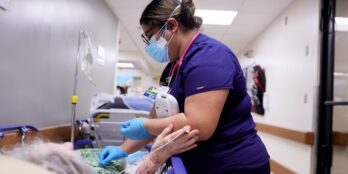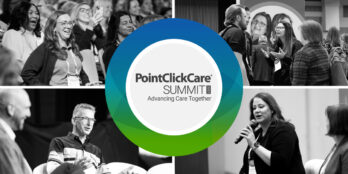
Taking a Different Approach to Senior Living Data
 2 min
2 min
Technology is a pivotal part of delivering and managing resident or patient outcomes in the healthcare industry, with a growing number of executive leaders incorporating different solutions into their daily workflows. Recently, professional services firm PwC polled 56 healthcare CEOs, from 27 different countries, to determine the prevalence of technology in this sector.
The poll revealed that approximately 54% of the healthcare CEOs said technology had “significantly” or “completely” changed the shape of competition in their industry over the past 20 years — and a whopping 86% of the healthcare CEOs said they believed technology would reshape competition within the next five years.
It’s fair to say that healthcare leaders worldwide have technology on the brain — and that they’ve had it on the brain for quite a while. Strangely, although senior living certainly has a healthcare component, the industry as a whole has been much slower to adopt new solutions or leverage technology to collect and analyze insightful data on their community.
However, leading senior living CEOs have made sure that their organizations are ahead of the curve when it comes to technology, data, and analytics. These leaders have leveraged data analytics to outsmart their competition, retain valuable staff, and provide residents personalized care.
“Leap of Faith”
For some senior living CEOs, adopting the technology that made data analytics possible initially required a leap of faith.
“We started our data analytics journey in probably 2009 or 2010,” Phil Fogg Jr., CEO and President of Marquis Companies, said in an interview for The Leadership Series. “Nobody in our profession was even thinking about data analytics, but I started realizing: We’re going to need to know our hospital readmissions in real-time. We’re going to need to know our clinical outcomes in real-time, we’re going to need to know utilization numbers in real-time.”
Fogg knows that being an early adopter of technology involved taking some risks — but he reckons that it’s better to take those risks, and stand out in the industry, than to sit back and watch other companies pass yours by.
“I’m kind of an early adopter, but this was more because we wanted to lead,” says Fogg. “I think people have three options: They can be the leader, which can make your brain hurt a bit sometimes. You can be the one in the back and not make any change until you have to, or you can be in the middle and progress somewhere in the middle. We wanted to be the leader.”
Positive Outcomes
Once a senior living provider has mastered the science of data analytics, the results can be used to optimize several sides of the business, from sales and marketing, to staffing and resident meal plans.
“It’s really simple. It’s understanding more about our patients and residents. It’s providing them with the understanding of how we can be more effective in managing that environment,” John Morgan, former CEO of Avamere, says of data analytics.
To learn more about how senior living CEOs are leveraging data analytics to the benefit of their residents, employees and bottom lines, be sure to download our free eBook: Leadership Series Executive Highlights: How Data is Driving Senior Living Decision Making.
October 20, 2017






